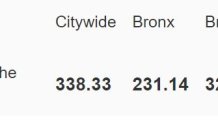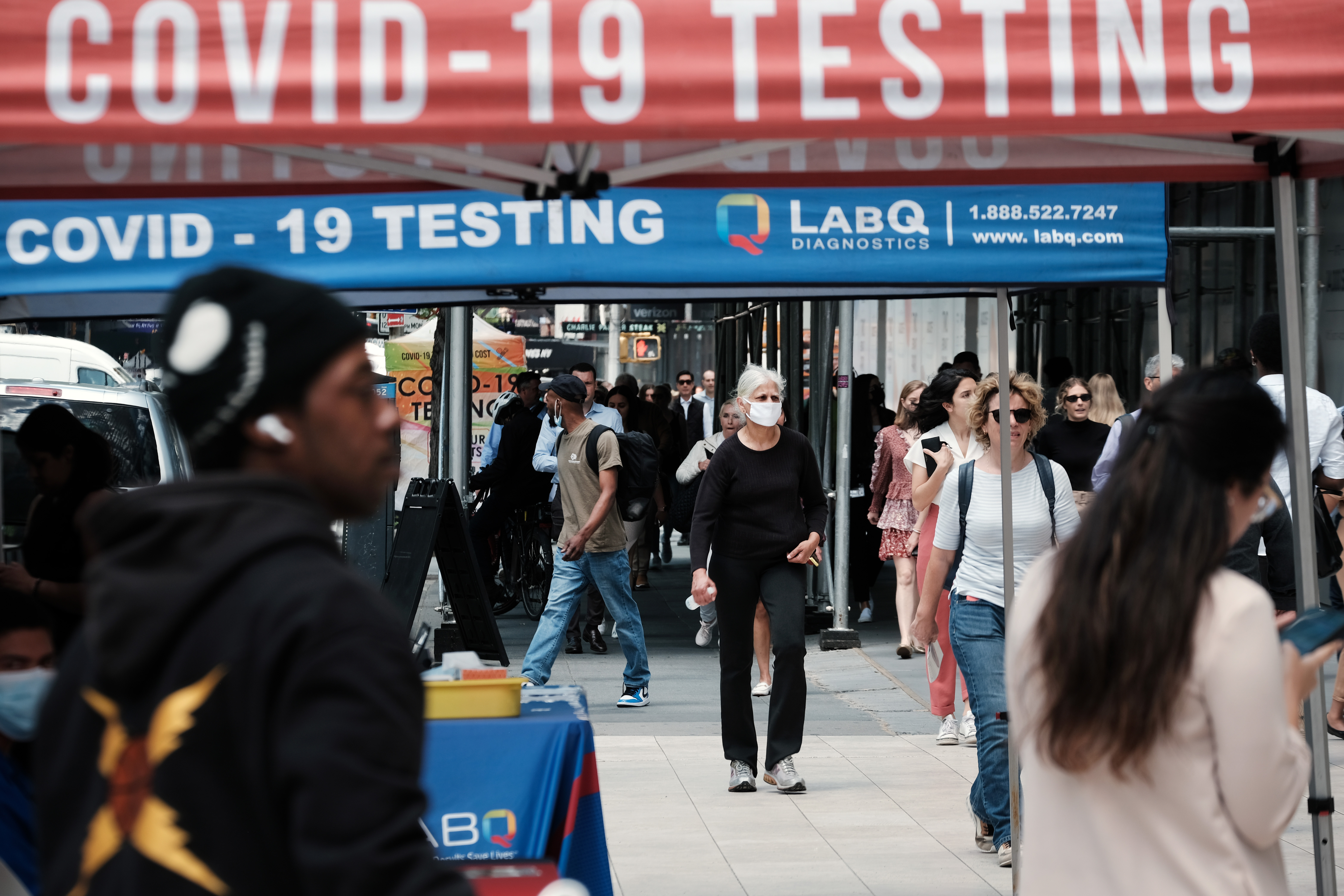New York state COVID hospitalizations are now nearing 3,000, more than doubling in the last month as an omicron subvariant believed to be the most transmissible strain yet fuels soaring infection rates across the country, health department data shows.
The statewide admission total stands at 2,705 as of Gov. Kathy Hochul's latest report, the highest number since Feb. 18, when the total was 2,745.
It was just earlier in May that hospitalizations topped the 2,000 mark for the first time since late February. More than half (52.5%) of patients currently hospitalized for COVID across the Empire State, though, didn't have that diagnosis listed as a primary reason for admission, which Hochul's office says suggests those cases are typically milder.
While the current hospitalization count is less than five times what it was at omicron's January peak -- and a shred of the nearly 19,000 hospitalized with COVID across the state at the height of the pandemic in April 2020, public health and elected officials are closely monitoring the data even as they continue to stress there's no cause for alarm.
Hochul, a Democrat, points to these more manageable hospitalization numbers and to falling case rates in the three New York regions hit first and hard by omicron subvariant BA.2.12.1 -- Central New York, the Finger Lakes and Mohawk Valley -- as reasons for optimism amid overall COVID trends that have renewed federal calls for public caution.
Get Tri-state area news delivered to your inbox. Sign up for NBC New York's News Headlines newsletter.
A day ago, federal officials warned rising case rates could intensify further over the coming months as they urged elected leaders in particularly hard-hit areas to consider re-upping calls for indoor masking among all people, vaccinated or not.
The Northeast, one of two parts of the country where the latest outbreaks have been concentrated, is now a sea of orange and yellow on the CDC risk map, reflecting high- and medium-community spread, though largely the former, in most of the tri-state area.
Forty-seven New York counties are currently deemed high risk for community-level COVID spread by the CDC, which reflects 75% of the state's 62 counties and more than a third of the 137 U.S. counties currently also designated high risk by the CDC.
Long Island has been responsible for much of that spread, reporting the highest rolling new case rate of all 10 regions in the state (63.0 per 100,000). That number is well above the state average (50.7) and is primarily driven by transmission rates in Suffolk County. The new case rate there is 69.4 compared to Nassau County's 57.2.
The region's rolling hospitalization rate (13.65) has also topped the state average (12.64) after lingering well below for much of this latest wave.
Only one of New York's 62 counties -- the Bronx -- has been in the CDC low-risk stage, though the New York City borough now meets the threshold for an upgrade to medium, based on a rolling case rate per 100,000 that city data shows well tops the 200 mark.

New York City's rolling transmission rate remains lower than the state average (48.7 new cases per 100,000 over a seven-day period), but viral spread has been intensifying considerably in recent weeks. COVID transmission rates citywide are up 34% in May, fueled mainly by soaring infection spread in Staten Island, Manhattan and now Queens.
City health officials transitioned the five boroughs to a "high" COVID alert phase earlier this week, meaning both the rolling new case and rolling new hospitalization rates had hit the CDC's threshold of 200 and 10, respectively, per 100,000 residents.
They had first issued a warning on Monday the switch would likely come in days, with the hospitalization rate hitting 9.2 per 100,000. It didn't even take 24 hours. And as of Thursday's data, the city's rolling hospitalization rate is up to 10.5 per 100,000.
Though the alert level is now considered high, no new COVID mandates are being implemented at this point. The city is instead recommending all people wear masks indoors and in other crowded settings, as is the guidance from the CDC, while continuing to stress the importance of regular testing and other protective measures.
Should the alert level reach "very high," the highest of the city's four tiers, health officials would reconsider implementing indoor mask mandates under the new benchmarking system outlined by Mayor Eric Adams' office earlier this year.
New York City COVID variant data doesn't isolate BA.2.12.1, specifically, but that subvariant is believed to account for most local cases. Health officials say that strain appears to be at least 25% more transmissible than the first omicron descendant, BA.2 (which was said to be more 30% more contagious than its predecessor). And that most contagious strain has been circulating locally at a much faster rate than nationally.
The CDC estimates that BA.2.12.1 now accounts for up to 79.5% of all virus circulating in the region that encompasses New York state, up once again over the prior week and reflecting a much higher share than BA.2.12.1's estimated national pie (47.5%).
More Coverage
While much remains unknown, scientifically, about BA.2.12.1 at this point, there's no evidence yet to link it to more severe COVID-linked illness and death or reduced vaccine efficacy, experts say.
And while the inherent transmissibility appears clear, officials say the same efforts that have helped beat back COVID at every stage will work now -- and the breadth of tools available will prevent any severe surge linked to the variants.
Adams sought to drive home the point in a series of TV interviews Thursday.
"We are not going to fight the war of the past as the war of the future. We have the tools and it's clear those tools are showing that our hospitalizations, our deaths are under control," the Democrat told FOX. "It's about not panicking, it's about being prepared with our antivirals readily accessible, delivered to your home if needed, testing."
"We're going to put over 16 million tests to people at home," Adams added. "If you are diagnosed, people are staying home. This is the way we have to start looking at living with COVID.




